1-pyridazin-/triazin-3-yl-piper(-azine)/idine/pyrolidine Derivatives And Compositions Thereof For Inhibiting The Activity Of Shp2
Chen; Christine Hiu-Tung ; et al.
U.S. patent application number 16/987322 was filed with the patent office on 2020-11-26 for 1-pyridazin-/triazin-3-yl-piper(-azine)/idine/pyrolidine derivatives and compositions thereof for inhibiting the activity of shp2. The applicant listed for this patent is NOVARTIS AG. Invention is credited to Christine Hiu-Tung Chen, Zhuoliang Chen, Jorge Garcia Fortanet, Denise Grunenfelder, Rajesh Karki, Mitsunori Kato, Matthew J. LaMarche, Lawrence Blas Perez, Travis Matthew Stams, Sarah Williams.
| Application Number | 20200369643 16/987322 |
| Document ID | / |
| Family ID | 1000005006765 |
| Filed Date | 2020-11-26 |
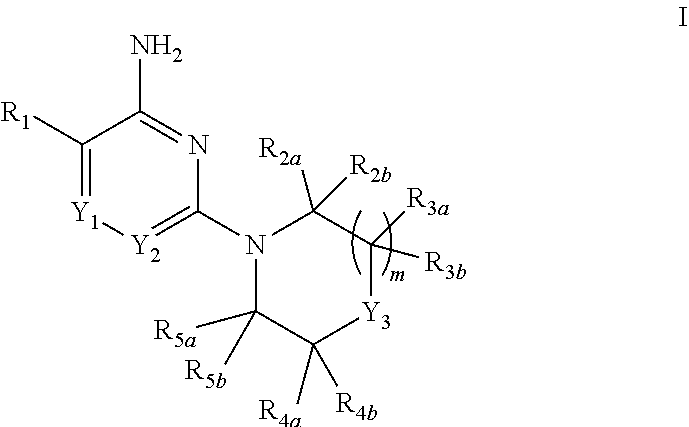
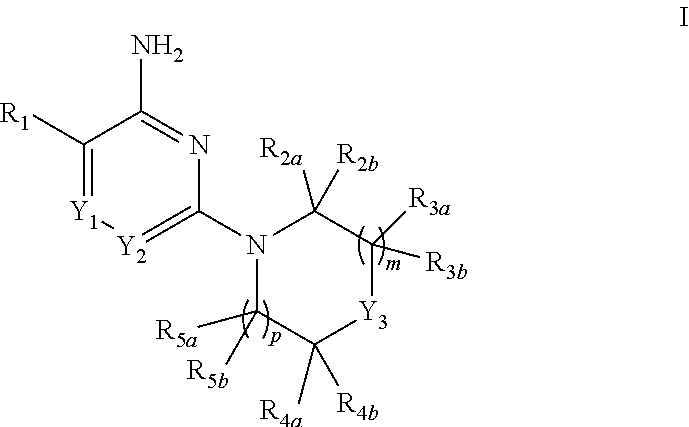
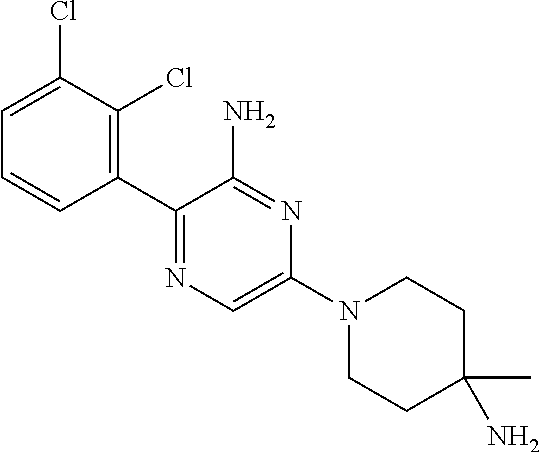


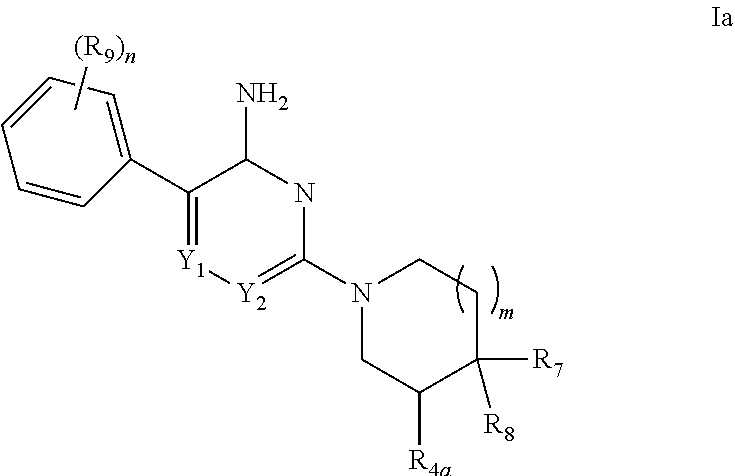




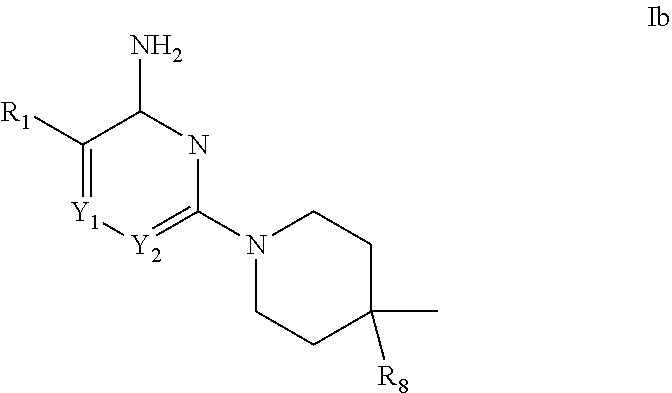
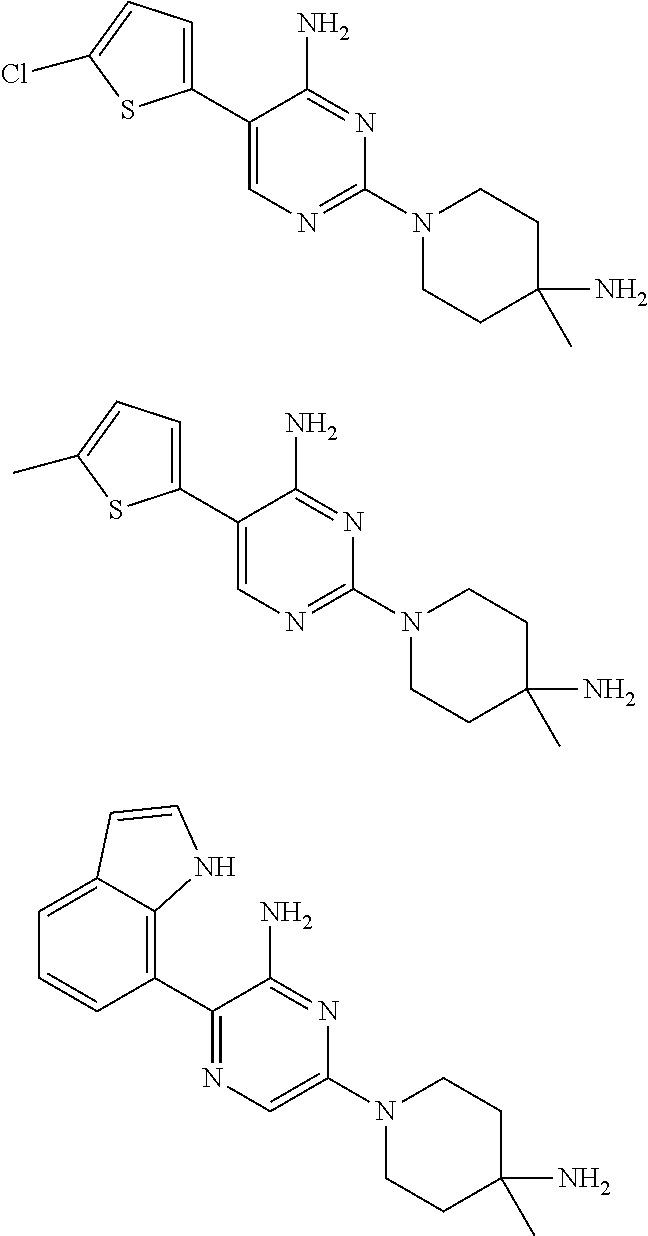
View All Diagrams
| United States Patent Application | 20200369643 |
| Kind Code | A1 |
| Chen; Christine Hiu-Tung ; et al. | November 26, 2020 |
1-PYRIDAZIN-/TRIAZIN-3-YL-PIPER(-AZINE)/IDINE/PYROLIDINE DERIVATIVES AND COMPOSITIONS THEREOF FOR INHIBITING THE ACTIVITY OF SHP2
Abstract
The present invention relates to compounds of formula I: ##STR00001## in which m, Y.sub.1, Y.sub.2, Y.sub.3, R.sub.1, R.sub.2a, R.sub.2b, R.sub.3a, R.sub.3b, R.sub.4a, R.sub.4b, R.sub.5a and R.sub.5b are defined in the Summary of the Invention; capable of inhibiting the activity of SHP2. The invention further provides a process for the preparation of compounds of the invention, pharmaceutical preparations comprising such compounds and methods of using such compounds and compositions in the management of diseases or disorders associated with the aberrant activity of SHP2.
| Inventors: | Chen; Christine Hiu-Tung; (Waltham, MA) ; Chen; Zhuoliang; (Belmont, MA) ; Fortanet; Jorge Garcia; (Wilmington, MA) ; Grunenfelder; Denise; (Pasadena, CA) ; Karki; Rajesh; (Quincy, MA) ; Kato; Mitsunori; (Long Island, NY) ; LaMarche; Matthew J.; (Reading, MA) ; Perez; Lawrence Blas; (Silver Springs, MD) ; Stams; Travis Matthew; (Stow, MA) ; Williams; Sarah; (Emeryville, CA) | ||||||||||
| Applicant: |
|
||||||||||
|---|---|---|---|---|---|---|---|---|---|---|---|
| Family ID: | 1000005006765 | ||||||||||
| Appl. No.: | 16/987322 | ||||||||||
| Filed: | August 6, 2020 |
Related U.S. Patent Documents
| Application Number | Filing Date | Patent Number | ||
|---|---|---|---|---|
| 16117674 | Aug 30, 2018 | 10774065 | ||
| 16987322 | ||||
| 15110498 | Jul 8, 2016 | 10093646 | ||
| PCT/IB2015/050343 | Jan 16, 2015 | |||
| 16117674 | ||||
| 61928738 | Jan 17, 2014 | |||
| Current U.S. Class: | 1/1 |
| Current CPC Class: | C07D 409/14 20130101; C07D 241/26 20130101; C07D 401/04 20130101; C07D 249/14 20130101; C07D 403/04 20130101; C07D 487/04 20130101; C07D 401/14 20130101; C07D 239/48 20130101; C07D 471/04 20130101 |
| International Class: | C07D 401/04 20060101 C07D401/04; C07D 239/48 20060101 C07D239/48; C07D 241/26 20060101 C07D241/26; C07D 249/14 20060101 C07D249/14; C07D 401/14 20060101 C07D401/14; C07D 403/04 20060101 C07D403/04; C07D 409/14 20060101 C07D409/14; C07D 471/04 20060101 C07D471/04; C07D 487/04 20060101 C07D487/04 |
Claims
1. A method of treating a disease or disorder mediated by the activity of SHP2 comprising administering a compound of formula Ic: ##STR00065## in which: n is selected from 1, 2, 3, 4 and 5; Y.sub.1 is selected from CH and N; Y.sub.2 is CR.sub.6; R.sub.3a is selected from C.sub.1-4alkyl, C.sub.1-4alkoxy, amino, hydroxy, C.sub.3-8cycloalkyl and C.sub.1-4alkyl-amino; R.sub.4a is selected from hydrogen, C.sub.1-4alkyl, C.sub.1-4alkoxy, amino, hydroxy, C.sub.3-8cycloalkyl and C.sub.1-4alkyl-amino; R.sub.6 is selected from hydrogen, halo and methyl; R.sub.9 is selected from halo, amino, hydroxy, N.sub.3, C.sub.1-4alkyl, halo-substituted-C.sub.1-4alkyl, C.sub.1-4alkoxy, --C(O)OR.sub.10 and --NHC(O)R.sub.10; R.sub.10 is selected from hydrogen, phenyl and naphthyl; wherein said phenyl of R.sub.13 is unsubstituted or substituted with methoxy; or a pharmaceutically acceptable salt thereof, to a person in need of such treatment in an effective amount for the prophylactic or therapeutic treatment of the disease or disorder.
2. The method of claim 1, wherein the disease or disorder mediated by the activity of SHP2 is selected from Noonan Syndrome, Leopard Syndrome, juvenile myelomonocytic leukemias, neuroblastoma, melanoma, acute myeloid leukemia, breast cancer, esophageal cancer, lung cancer, colon cancer, head cancer, neuroblastoma, squamous-cell carcinoma of the head and neck, gastric carcinoma, anaplastic large-cell lymphoma and glioblastoma.
3. The method of claim 2, wherein the compound is: ##STR00066## or a pharmaceutically acceptable salt thereof.
4. A method of treating lung cancer comprising administering the compound: ##STR00067## or a pharmaceutically acceptable salt thereof.
Description
CROSS-REFERENCE TO RELATED APPLICATIONS
[0001] This application is a divisional of U.S. patent application Ser. No. 16/117,674 filed 30 Aug. 2018, which is a continuation of U.S. patent application Ser. No. 15/110,498, filed 8 Jul. 2016, which is a 371 U.S. national phase application of international application number PCT/IB2015/050343 filed 16 Jan. 2015, which application claims the benefit of priority under 35 U.S.C. .sctn. 119(e) to U.S. Provisional Patent Application No. 61/928,738, filed 17 Jan. 2014. The disclosure of these applications are incorporated herein by reference in their entirety and for all purposes.
BACKGROUND
Field of the Invention
[0002] The present invention relates to compounds capable of inhibiting the activity of SHP2. The invention further provides a process for the preparation of compounds of the invention, pharmaceutical preparations comprising such compounds and methods of using such compounds and compositions in the management of diseases or disorders associated with the aberrant activity of SHP2.
Background of the Invention
[0003] The Src Homolgy-2 phosphatase (SHP2) is a non-receptor protein tyrosine phosphatase encoded by the PTPN11 gene that contributes to multiple cellular functions including proliferation, differentiation, cell cycle maintenance and migration. SHP2 is involved in signaling through the Ras-mitogen-activated protein kinase, the JAK-STAT or the phosphoinositol 3-kinase-AKT pathways.
[0004] SHP2 has two N-terminal Src homology 2 domains (N-SH2 and C-SH2), a catalytic domain (PTP), and a C-terminal tail. The two SH2 domains control the subcellular localization and functional regulation of SHP2. The molecule exists in an inactive, self-inhibited conformation stabilized by a binding network involving residues from both the N-SH2 and PTP domains. Stimulation by, for example, cytokines or growth factors leads to exposure of the catalytic site resulting in enzymatic activation of SHP2.
[0005] Mutations in the PTPN11 gene and subsequently in SHP2 have been identified in several human diseases, such as Noonan Syndrome, Leopard Syndrome, juvenile myelomonocytic leukemias, neuroblastoma, melanoma, acute myeloid leukemia and cancers of the breast, lung and colon. SHP2, therefore, represents a highly attractive target for the development of novel therapies for the treatment of various diseases. The compounds of the present invention fulfill the need of small molecules to that inhibit the activity of SHP2.
SUMMARY OF THE INVENTION
[0006] In one aspect, the present invention provides compounds of Formula I:
##STR00002##
[0007] in which: m is selected from 0, 1 and 2; p is selected from 0 and 1; Y.sub.1 is selected from CH and N; Y.sub.2 is selected from CR.sub.6 and N; Y.sub.3 is selected from NH and CR.sub.7R.sub.8; R.sub.1 is selected from C.sub.6-10aryl, C.sub.3-8cycloalkyl, C.sub.3-8cycloalkenyl and a 5-9 member heteroaryl group containing from 1 to 4 heteroatoms selected from N, O and S; wherein said aryl or heteroaryl of R.sub.1 is substituted with 1 to 5 R.sub.9 groups independently selected from halo, amino, hydroxy, N.sub.3, C.sub.1-4alkyl, hydroxy-substituted-C.sub.1-4alkyl, halo-susbtituted-C.sub.1-4alkyl, amino-substituted-C.sub.1-4alkyl, --C(O)OR.sub.10 and --NHC(O)R.sub.10; R.sub.10 is selected from hydrogen, phenyl and naphthyl; wherein said phenyl of R.sub.10 is unsubstituted or substituted with methoxy; R.sub.2a and R.sub.2b are independently selected from hydrogen, C.sub.1-4alkyl, C.sub.1-4alkoxy, amino, hydroxy, C.sub.3-8cycloalkyl and C.sub.1-4alkyl-amino; R.sub.3a and R.sub.3b are independently selected from hydrogen, halo, carbonyl, C.sub.1-4alkyl, C.sub.1-4alkoxy, amino, hydroxy, C.sub.3-8cycloalkyl and C.sub.1-4alkyl-amino; R.sub.4a and R.sub.4b are independently selected from hydrogen, halo, carbonyl, C.sub.1-4alkyl, C.sub.1-4alkoxy, amino, hydroxy, C.sub.3-8cycloalkyl and C.sub.1-4alkyl-amino; R.sub.5a and R.sub.5b are independently selected from hydrogen, carbonyl, C.sub.1-4alkyl, C.sub.1-4alkoxy, amino, hydroxy, C.sub.3-8cycloalkyl and C.sub.1-4alkyl-amino; wherein any two groups selected from R.sub.2a, R.sub.3a, R.sub.4a and R.sub.7 can form a 5 to 6 member unsaturated, partially unsaturated ring or saturated ring optionally containing a ring nitrogen; R.sub.6 is selected from hydrogen, halo, cyano, C.sub.1-4alkyl C.sub.1-4alkoxy, amino-carbonyl, halo-substituted C.sub.1-4alkyl, halo-substituted C.sub.1-4alkoxy, hydroxy-substituted C.sub.1-4alkyl, amino-substituted C.sub.1-4alkyl, --S(O).sub.1-2R.sub.6a, --C(S)R.sub.6a, --C(O)NR.sub.6aR.sub.6b, --C(NH)NR.sub.6aR.sub.6b and --NR.sub.6aC(O)R.sub.6b; wherein R.sub.6a and R.sub.6b are independently selected from hydrogen and C.sub.1-4alkyl; R7 is selected from hydrogen, C.sub.1-4alkyl, C.sub.3-6cycloalkyl, C.sub.6-10aryl and a 5-9 member heteroaryl group containing from 1 to 4 heteroatoms selected from N, O and S; R.sub.7 and R.sub.4a together with the carbon atoms to which they are both attached can form a fused pyrrolidinyl or cyclopropyl group substituted with amino (such as example 19, infra); R.sub.8 is selected from amino, amino-methyl and methyl-amino; or a pharmaceutically acceptable salt thereof.
[0008] In a second aspect, the present invention provides a pharmaceutical composition which contains a compound of Formula I or a N-oxide derivative, tautomer, individual isomers and mixture of isomers thereof; or a pharmaceutically acceptable salt thereof, in admixture with one or more suitable excipients.
[0009] In a third aspect, the present invention provides a method of treating a disease in an animal in which modulation of SHP2 activity can prevent, inhibit or ameliorate the pathology and/or symptomology of the diseases, which method comprises administering to the animal a therapeutically effective amount of a compound of Formula I or a N-oxide derivative, individual isomers and mixture of isomers thereof, or a pharmaceutically acceptable salt thereof.
[0010] In a fourth aspect, the present invention provides a method of treating a disease in an animal in which modulation of SHP2 activity can prevent, inhibit or ameliorate the pathology and/or symptomology of the diseases, which method comprises administering to the animal a therapeutically effective amount of a compound of Formula I or a N-oxide derivative, individual isomers and mixture of isomers thereof, or a pharmaceutically acceptable salt thereof, in simultaneous or sequential combination with an anti-cancer therapeutic.
[0011] In a fifth aspect, the present invention provides the use of a compound of Formula I in the manufacture of a medicament for treating a disease in an animal in which SHP2 activity contributes to the pathology and/or symptomology of the disease.
[0012] In a sixth aspect, the present invention provides a process for preparing compounds of Formula I and the N-oxide derivatives, prodrug derivatives, protected derivatives, individual isomers and mixture of isomers thereof, and the pharmaceutically acceptable salts thereof.
Definitions
[0013] The general terms used hereinbefore and hereinafter preferably have within the context of this disclosure the following meanings, unless otherwise indicated, where more general terms whereever used may, independently of each other, be replaced by more specific definitions or remain, thus defining more detailed embodiments of the invention:
[0014] "Alkyl" refers to a fully saturated branched or unbranched hydrocarbon moiety having up to 20 carbon atoms. Unless otherwise provided, alkyl refers to hydrocarbon moieties having 1 to 7 carbon atoms (C.sub.1-7alkyl), or 1 to 4 carbon atoms (C.sub.1-4alkyl). Representative examples of alkyl include, but are not limited to, methyl, ethyl, n-propyl, iso-propyl, n-butyl, sec-butyl, iso-butyl, tert-butyl, n-pentyl, isopentyl, neopentyl, n-hexyl, 3-methylhexyl, 2,2-dimethylpentyl, 2,3-dimethylpentyl, n-heptyl, n-octyl, n-nonyl, n-decyl and the like. A substituted alkyl is an alkyl group containing one or more, such as one, two or three substituents selected from halogen, hydroxy or alkoxy groups. Halo-substituted-alkyl and halo-substituted-alkoxy, can be either straight-chained or branched and includes, methoxy, ethoxy, difluoromethyl, trifluoromethyl, pentafluoroethyl, difluoromethoxy, trifluoromethoxy, and the like.
[0015] "Aryl" means a monocyclic or fused bicyclic aromatic ring assembly containing six to ten ring carbon atoms. For example, aryl may be phenyl or naphthyl, preferably phenyl. "Arylene" means a divalent radical derived from an aryl group.
[0016] "Heteroaryl" is as defined for aryl above where one or more of the ring members is a heteroatom. For example C.sub.5-10heteroaryl is a minimum of 5 members as indicated by the carbon atoms but that these carbon atoms can be replaced by a heteroatom. Consequently, C.sub.5-10heteroaryl includes pyridyl, indolyl, indazolyl, quinoxalinyl, quinolinyl, benzofuranyl, benzopyranyl, benzothiopyranyl, benzo[1,3]dioxole, imidazolyl, benzo-imidazolyl, pyrimidinyl, furanyl, oxazolyl, isoxazolyl, triazolyl, tetrazolyl, pyrazolyl, thienyl, etc.
[0017] "Cycloalkyl" means a saturated or partially unsaturated, monocyclic, fused bicyclic or bridged polycyclic ring assembly containing the number of ring atoms indicated. For example, C.sub.3-10cycloalkyl includes cyclopropyl, cyclobutyl, cyclopentyl, cyclohexyl, cyclohexenyl, etc.
[0018] "Heterocycloalkyl" means cycloalkyl, as defined in this application, provided that one or more of the ring carbons indicated, are replaced by a moiety selected from --O--, --N.dbd., --NR--, --C(O)--, --S--, --S(O)-- or --S(O).sub.2--, wherein R is hydrogen, C.sub.1-4alkyl or a nitrogen protecting group. For example, C.sub.3-8heterocycloalkyl as used in this application to describe compounds of the invention includes morpholino, pyrrolidinyl, pyrrolidinyl-2-one, piperazinyl, piperidinyl, piperidinylone, 1,4-dioxa-8-aza-spiro[4.5]dec-8-yl, thiomorpholino, sulfanomorpholino, sulfonomorpholino, etc.
[0019] "Halogen" (or halo) preferably represents chloro or fluoro, but may also be bromo or iodo.
[0020] "SHP2" means "Src Homolgy-2 phosphatase" and is also known as SH-PTP2, SH-PTP3, Syp, PTP1D, PTP2C, SAP-2 or PTPN11.
[0021] Cancers harboring "PTPN11 mutations" include but are not limited to: N58Y; D61Y, V; E69K; A72V, T, D; E76G, Q, K (ALL); G60A; D61Y; E69V; F71K; A72V; T73I; E76G, K; R289G; G503V (AML); G60R, D61Y, V, N; Y62D; E69K; A72T, V; T731; E76K, V, G, A, Q; E139D; G503A, R; Q506P (JMML); G60V; D61V; E69K; F71L; A72V; E76A (MDS); Y63C (CMML); Y62C; E69K; T507K (neuroblastoma); V46L; N58S; E76V (Lung cancer); R138Q (melanoma); E76G (colon cancer).
[0022] Compounds of formula I may have different isomeric forms. For example, any asymmetric carbon atom may be present in the (R)-, (S)- or (R,S)-configuration, preferably in the (R)- or (S)-configuration. Substituents at a double bond or especially a ring may be present in cis- (=Z-) or trans (=E-) form. The compounds may thus be present as mixtures of isomers or preferably as pure isomers, preferably as pure diastereomers or pure enantiomers.
[0023] Where the plural form (e.g. compounds, salts) is used, this includes the singular (e.g. a single compound, a single salt). "A compound" does not exclude that (e.g. in a pharmaceutical formulation) more than one compound of the formula I (or a salt thereof) is present, the "a" merely representing the indefinite article. "A" can thus preferably be read as "one or more", less preferably alternatively as "one".
[0024] Wherever a compound or compounds of the formula I are mentioned, this is further also intended to include N-oxides of such compounds and/or tautomers thereof.
[0025] The term "and/or an N-oxide thereof, a tautomer thereof and/or a (preferably pharmaceutically acceptable) salt thereof" especially means that a compound of the formula I may be present as such or in mixture with its N-oxide, as tautomer (e.g. due to keto-enol, lactam-lactim, amide-imidic acid or enamine-imine tautomerism) or in (e.g. equivalency reaction caused) mixture with its tautomer, or as a salt of the compound of the formula I and/or any of these forms or mixtures of two or more of such forms.
[0026] For the following compounds, the NH2 group attached to the pyrazine ring is critical for potency. Analysis of the crystallographic structure shows the NH2 group in an intramolecular interaction with the backbone carbonyl group of SHP2 residue E250:
TABLE-US-00001 SHP2 Compound IC50 ##STR00003## 70 nM ##STR00004## 5.7 .mu.M
[0027] The present invention also includes all suitable isotopic variations of the compounds of the invention, or pharmaceutically acceptable salts thereof. An isotopic variation of a compound of the invention or a pharmaceutically acceptable salt thereof is defined as one in which at least one atom is replaced by an atom having the same atomic number but an atomic mass different from the atomic mass usually found in nature. Examples of isotopes that may be incorporated into the compounds of the invention and pharmaceutically acceptable salts thereof include, but are not limited to, isotopes of hydrogen, carbon, nitrogen and oxygen such as as .sup.2H, .sup.3H, .sup.11C, .sup.13C, .sup.14C, .sup.15N, .sup.17O, .sup.18O, .sup.35S, .sup.18F, .sup.36Cl and .sup.123I. Certain isotopic variations of the compounds of the invention and pharmaceutically acceptable salts thereof, for example, those in which a radioactive isotope such as .sup.3H or .sup.14C is incorporated, are useful in drug and/or substrate tissue distribution studies. In particular examples, .sup.3H and .sup.14C isotopes may be used for their ease of preparation and detectability. In other examples, substitution with isotopes such as .sup.2H may afford certain therapeutic advantages resulting from greater metabolic stability, such as increased in vivo half-life or reduced dosage requirements. Isotopic variations of the compounds of the invention or pharmaceutically acceptable salts thereof can generally be prepared by conventional procedures using appropriate isotopic variations of suitable reagents. For example, compound can exist in a deutorated form as shown below:
##STR00005##
DESCRIPTION OF PREFERRED EMBODIMENTS
[0028] The present invention relates to compounds capable of inhibiting the activity of SHP2. In one aspect of the invention, with respect to compounds of Formula I, are compounds of Formula Ia:
##STR00006##
[0029] in which: m is selected from 0 and 1; n is selected from 1, 2, 3, 4 and 5; Y.sub.1 is selected from CH and N; Y.sub.2 is selected from CR.sub.6 and N; R.sub.4a is selected from hydrogen, methyl and hydroxy; R.sub.6 is selected from hydrogen, halo, cyano, C.sub.1-4alkyl, C.sub.1-4alkoxy, amino-carbonyl, halo-substituted C.sub.1-4alkyl, halo-substituted C.sub.1-4alkoxy, hydroxy-substituted C.sub.1-4alkyl, amino-substituted C.sub.1-4alkyl, --S(O).sub.1-2aR.sub.6a, --C(S)R.sub.6a, --C(O)NR.sub.6aR.sub.6b, --C(NH)NR.sub.6aR.sub.6b and --NR.sub.6aC(O)R.sub.6b; wherein R.sub.6a and R.sub.6b are independently selected from hydrogen and C.sub.1-4alkyl; R.sub.7 is selected from hydrogen, methyl, phenyl, pyrazinyl and pyridinyl; R.sub.7 and R.sub.4a together with the carbon atoms to which they are both attached can form a cyclopropyl group substituted with amino; R.sub.8 is selected from amino and methyl-amino; R.sub.9 is selected from halo, amino, hydroxy, N.sub.3, C.sub.1-4alkyl, halo-substituted-C.sub.1-4alkyl, C.sub.1-4alkoxy, --C(O)OR.sub.10 and --NHC(O)R.sub.10; R.sub.10 is selected from hydrogen, phenyl and naphthyl; wherein said phenyl of R.sub.10 is unsubstituted or substituted with methoxy; or a pharmaceutically acceptable salt thereof.
[0030] In a further aspect of the invention are compounds, or the pharmaceutically acceptable salt thereof, selected from:
##STR00007## ##STR00008## ##STR00009## ##STR00010##
[0031] In another aspect of the invention are compounds of formula Ib:
##STR00011##
[0032] in which: Y.sub.1 is selected from CH and N; Y.sub.2 is selected from CR.sub.6 and N; R.sub.1 is selected from thiophen-2-yl and 1H-indol-7-yl; wherein said thiophen-2-yl can be substituted with a group selected from methyl and chloro; R.sub.6 is selected from hydrogen, halo and methyl; R.sub.8 is selected from amino and methyl-amino; or a pharmaceutically acceptable salt thereof.
[0033] In a further aspect of the invention are compounds, or the pharmaceutically acceptable salt thereof, selected from:
##STR00012##
[0034] In another aspect of the invention are compounds of formula Ic:
##STR00013##
[0035] in which: n is selected from 1, 2, 3, 4 and 5; Y.sub.1 is selected from CH and N; Y.sub.2 is selected from CR.sub.6 and N; R.sub.3a is selected from C.sub.1-4alkyl, C.sub.1-4alkoxy, amino, hydroxy, C.sub.3-8cycloalkyl and C.sub.1-4alkyl-amino; R.sub.4a is selected from hydrogen, C.sub.1-4alkyl, C.sub.1-4alkoxy, amino, hydroxy, C.sub.3-8cycloalkyl and C.sub.1-4alkyl-amino; R.sub.6 is selected from hydrogen, halo, cyano, C.sub.1-4alkyl, C.sub.1-4alkoxy, amino-carbonyl, halo-substituted C.sub.1-4alkyl, halo-substituted C.sub.1-4alkoxy, hydroxy-substituted C.sub.1-4alkyl, amino-substituted C.sub.1-4alkyl, --S(O).sub.1-2R.sub.6a, --C(S)R.sub.6a, --C(O)NR.sub.6aR.sub.6b, --C(NH)NR.sub.6aR.sub.6b and --NR.sub.6aC(O)R.sub.6b; wherein R.sub.6a and R.sub.6b are independently selected from hydrogen and C.sub.1-4alkyl; R.sub.10 is selected from hydrogen, phenyl and naphthyl; wherein said phenyl of R.sub.13 is unsubstituted or substituted with methoxy; or a pharmaceutically acceptable salt thereof.
[0036] In a further aspect of the invention are compounds, or the pharmaceutically acceptable salt thereof, selected from:
##STR00014##
[0037] In another aspect of the invention are compounds, or the pharmaceutically acceptable salt thereof, selected from:
##STR00015##
[0038] In another aspect of the invention are compounds, or the pharmaceutically acceptable salt thereof, selected from:
##STR00016## ##STR00017##
Pharmacology and Utility
[0039] The Src Homolgy-2 phosphatase (SHP2) is a protein tyrosine phosphatase encoded by the PTPN11 gene that contributes to multiple cellular functions including proliferation, differentiation, cell cycle maintenance and migration. SHP2 is involved in signaling through the Ras-mitogen-activated protein kinase, the JAK-STAT or the phosphoinositol 3-kinase-AKT pathways. SHP2 mediates activation of Erkl and Erk2 (Erkl/2, Erk) MAP kinases by receptor tyrosine kinases such as ErbBl, ErbB2 and c-Met.
[0040] SHP2 has two N-terminal Src homology 2 domains (N-SH2 and C-SH2), a catalytic domain (PTP), and a C-terminal tail. The two SH2 domains control the subcellular localization and functional regulation of SHP2. The molecule exists in an inactive conformation, inhibiting its own activity via a binding network involving residues from both the N-SH2 and PTP domains. In response to growth factor stimulation, SHP2 binds to specific tyrosine-phosphorylated sites on docking proteins such as Gab1 and Gab2 via its SH2 domains. This induces a conformational change that results in SHP2 activation.
[0041] Mutations in PTPN11 have been identified in several human diseases, such as Noonan Syndrome, Leopard Syndrome, juvenile myelomonocytic leukemias, neuroblastoma, melanoma, acute myeloid leukemia and cancers of the breast, lung and colon. SHP2 is an important downstream signaling molecule for a variety of receptor tyrosine kinases, including the receptors of platelet-derived growth factor (PDGF-R), fibroblast growth factor (FGF-R) and epidermal growth factor (EGF-R). SHP2 is also an important downstream signaling molecule for the activation of the mitogen activated protein (MAP) kinase pathway which can lead to cell transformation, a prerequisite for the development of cancer. Knock-down of SHP2 significantly inhibited cell growth of lung cancer cell lines with SHP2 mutation or EML4/ALK translocations as well as EGFR amplified breast cancers and esophageal cancers. SHP2 is also activated downstream of oncogenes in gastric carcinoma, anaplastic large-cell lymphoma and glioblastoma.
[0042] Noonan Syndrome (NS) and Leopard Syndrome (LS)--PTPN11 mutations cause LS (multiple lentigenes, electrocardiographic conduction abnormalities, ocular hypertelorism, pulmonic stenosis, abnormal genitalia, retardation of growth, sensorineural deafness) and NS (congenital anomalies including cardiac defects, craniofacial abnormalities and short stature). Both disorders are part of a family of autosomal dominant syndromes caused by germline mutations in components of the RAS/RAF/MEK/ERK mitogen activating protein kinase pathway, required for normal cell growth and differentiation. Aberrant regulation of this pathway has profound effects, particularly on cardiac development, resulting in various abnormalities, including valvuloseptal defects and/or hypertrophic cardiomyopathy (HCM). Perturbations of the MAPK signaling pathway have been established as central to these disorders and several candidate genes along this pathway have been identified in humans, including mutations in KRAS, NRAS, SOS1, RAF1, BRAF, MEK1, MEK2, SHOC2, and CBL. The gene most commonly mutated in NS and LS is PTPN11. Germline mutations in PTPN11 (SHP2) are found in .about.50% of the cases with NS and nearly all patients with LS that shares certain features with NS. For NS, Y62D and Y63C substitutions in the protein are largely invariant and are among the most common mutations. Both these mutations affect the catalytically inactive conformation of SHP2 without perturbing the binding of the phosphatase to its phosphorylated signaling partners.
[0043] Juvenile Myelomonocytic Leukemias (JMML)--Somatic mutations in PTPN11 (SHP2) occur in about 35% of the patients with JMML, a childhood myeloproliferative disorder (MPD). These gain-of-function mutations are typically point mutations in the N-SH2 domain or in the phosphatase domain, which prevent self-inhibition between the catalytic domain and the N-SH2 domain, resulting in SHP2 activity.
[0044] Acute Myeloid Leukemia--PTPN11 mutations have been identified in: .about.10% of pediatric acute leukemias, such as myelodysplastic syndrome (MDS); .about.7% of B cell acute lymphoblastic leukemia (B-ALL); and .about.4% of acute myeloid leukemia (AML).
[0045] NS and leukemia mutations cause changes in amino acids located at the interface formed by the N-SH2 and PTP domains in the self-inhibited SHP2 conformation, disrupting the inhibitory intramolecular interaction, leading to hyperactivity of the catalytic domain.
[0046] SHP2 acts as a positive regulator in receptor tyrosine kinase (RTK) signaling. Cancers containing RTK alterations (EGFR.sup.amp, Her2.sup.amp, FGFR.sup.amp, Met.sup.amp, translocated/activated RTK, i.e. ALK, BCR/ABL) include Esophageal, Breast, Lung, Colon, Gastric, Glioma, Head and Neck cancers.
[0047] Esophageal cancer (or oesophageal cancer) is a malignancy of the esophagus. There are various subtypes, primarily squamous cell cancer (<50%) and adenocarcinoma. There is a high rate of RTK expression in esophageal adenocarcinoma and squamous cell cancer. A SHP2 inhibitor of the invention can, therefore, be employed for innovative treatment strategies.
[0048] Breast cancer is a major type of cancer and a leading cause of death in women, where patients develop resistance to current drugs. There are four major subtypes of breast cancers including luminal A, luminal B, Her2 like, and triple negative/Basal-like. Triple negative breast cancer (TNBC) is an aggressive breast cancer lacking specific targeted therapy. Epidermal growth factor receptor I (EGFR) has emerged as a promising target in TNBC. Inhibition of Her2 as well as EGFR via SHP2 may be a promising therapy in breast cancer.
[0049] Lung Cancer--NSCLC is currently a major cause of cancer-related mortality. accounting for about 85% of lung cancers (predominantly adenocarcinomas and squamous cell carcinomas). Although cytotoxic chemotherapy remains an important part of treatment, targeted therapies based on genetic alterations such as EGFR and ALK in the tumor are more likely to benefit from a targeted therapy.
[0050] Colon Cancer--Approximately 30% to 50% of colorectal tumors are known to have a mutated (abnormal) KRAS, and BRAF mutations occur in 10 to 15% of colorectal cancers. For a subset of patients whose colorectal tumors have been demonstrated to over express EGFR, these patients exhibit a favorable clinical response to anti-EGFR therapy.
[0051] Gastic Cancer is one of the most prevalent cancer types. Aberrant expression of tyrosine kinases, as reflected by the aberrant tyrosine phosphorylation in gastric cancer cells, is known in the art. Three receptor-tyrosine kinases, c-met (HGF receptor), FGF receptor 2, and erbB2/neu are frequently amplified in gastric carcinomas. Thus, subversion of different signal pathways may contribute to the progression of different types of gastric cancers.
[0052] Neuroblastoma is a pediatric tumor of the developing sympathetic nervous system, accounting for about 8% of childhood cancers. Genomic alterations of the anaplastic lymphoma kinase (ALK) gene have been postulated to contribute to neuroblastoma pathogenesis.
[0053] Squamous-cell carcinoma of the head and neck (SCCHN). High levels of EGFR expression are correlated with poor prognosis and resistance to radiation therapy in a variety of cancers, mostly in squamous-cell carcinoma of the head and neck (SCCHN). Blocking of the EGFR signaling results in inhibition of the stimulation of the receptor, cell proliferation, and reduced invasiveness and metastases. The EGFR is, therefore, a prime target for new anticancer therapy in SCCHN.
[0054] The present invention relates to compounds capable of inhibiting the activity of SHP2. The invention further provides a process for the preparation of compounds of the invention and pharmaceutical preparations comprising such compounds. Another aspect of the present invention relates to a method of treating SHP2-mediated disorders comprising the step of administering to a patient in need thereof a therapeutically effective amount of a compound of formula I as defined in the Summary of the Invention.
[0055] In certain embodiments, the present invention relates to the aforementioned method, wherein said SHP2-mediated disorders are cancers selected from, but not limited to: JMML; AML; MDS; B-ALL; neuroblastoma; esophageal; breast cancer; lung cancer; colon cancer; Gastric cancer, Head and Neck cancer.
[0056] The compounds of the present invention may also be useful in the treatment of other diseases or conditions related to the aberrant activity of SHP2. Thus, as a further aspect, the invention relates to a method of treatment of a disorder selected from: NS; LS; JMML; AML; MDS; B-ALL; neuroblastoma; esophageal; breast cancer; lung cancer; colon cancer; gastric cancer; head and neck cancer.
[0057] A SHP2 inhibitor of the present invention may be usefully combined with another pharmacologically active compound, or with two or more other pharmacologically active compounds, particularly in the treatment of cancer. For example, a compound of the formula (I), or a pharmaceutically acceptable salt thereof, as defined above, may be administered simultaneously, sequentially or separately in combination with one or more agents selected from chemotherapy agents, for example, mitotic inhibitors such as a taxane, a vinca alkaloid, paclitaxel, docetaxel, vincristine, vinblastine, vinorelbine or vinflunine, and other anticancer agents, e.g. cisplatin, 5-fluorouracil or 5-fluoro-2-4(1H,3H)-pyrimidinedione (5FU), flutamide or gemcitabine.
[0058] Such combinations may offer significant advantages, including synergistic activity, in therapy.
[0059] In certain embodiments, the present invention relates to the aforementioned method, wherein said compound is administered parenterally.
[0060] In certain embodiments, the present invention relates to the aforementioned method, wherein said compound is administered intramuscularly, intravenously, subcutaneously, orally, pulmonary, intrathecally, topically or intranasally.
[0061] In certain embodiments, the present invention relates to the aforementioned method, wherein said compound is administered systemically.
[0062] In certain embodiments, the present invention relates to the aforementioned method, wherein said patient is a mammal.
[0063] In certain embodiments, the present invention relates to the aforementioned method, wherein said patient is a primate.
[0064] In certain embodiments, the present invention relates to the aforementioned method, wherein said patient is a human.
[0065] In another aspect, the present invention relates to a method of treating an SHP2-mediated disorder, comprising the step of: administering to a patient in need thereof a therapeutically effective amount of a chemothereutic agent in combination with a therapeutically effective amount of a compound of formula I as defined in the Summary of the Invention.
Pharmaceutical Compositions
[0066] In another aspect, the present invention provides pharmaceutically acceptable compositions which comprise a therapeutically-effective amount of one or more of the compounds described above, formulated together with one or more pharmaceutically acceptable carriers (additives) and/or diluents. As described in detail below, the pharmaceutical compositions of the present invention may be specially formulated for administration in solid or liquid form, including those adapted for the following: (1) oral administration, for example, drenches (aqueous or non-aqueous solutions or suspensions), tablets, e.g., those targeted for buccal, sublingual, and systemic absorption, boluses, powders, granules, pastes for application to the tongue; (2) parenteral administration, for example, by subcutaneous, intramuscular, intravenous or epidural injection as, for example, a sterile solution or suspension, or sustained-release formulation; (3) topical application, for example, as a cream, ointment, or a controlled-release patch or spray applied to the skin; (4) intravaginally or intrarectally, for example, as a pessary, cream or foam; (5) sublingually; (6) ocularly; (7) transdermally; (8) nasally; (9) pulmonary; or (10) intrathecally.
[0067] The phrase "therapeutically-effective amount" as used herein means that amount of a compound, material, or composition comprising a compound of the present invention which is effective for producing some desired therapeutic effect in at least a sub-population of cells in an animal at a reasonable benefit/risk ratio applicable to any medical treatment.
[0068] The phrase "pharmaceutically acceptable" is employed herein to refer to those compounds, materials, compositions, and/or dosage forms which are, within the scope of sound medical judgment, suitable for use in contact with the tissues of human beings and animals without excessive toxicity, irritation, allergic response, or other problem or complication, commensurate with a reasonable benefit/risk ratio.
[0069] The phrase "pharmaceutically-acceptable carrier" as used herein means a pharmaceutically-acceptable material, composition or vehicle, such as a liquid or solid filler, diluent, excipient, manufacturing aid (e.g., lubricant, talc magnesium, calcium or zinc stearate, or steric acid), or solvent encapsulating material, involved in carrying or transporting the subject compound from one organ, or portion of the body, to another organ, or portion of the body. Each carrier must be "acceptable" in the sense of being compatible with the other ingredients of the formulation and not injurious to the patient. Some examples of materials which can serve as pharmaceutically-acceptable carriers include: (1) sugars, such as lactose, glucose and sucrose; (2) starches, such as corn starch and potato starch; (3) cellulose, and its derivatives, such as sodium carboxymethyl cellulose, ethyl cellulose and cellulose acetate; (4) powdered tragacanth; (5) malt; (6) gelatin; (7) talc; (8) excipients, such as cocoa butter and suppository waxes; (9) oils, such as peanut oil, cottonseed oil, safflower oil, sesame oil, olive oil, corn oil and soybean oil; (10) glycols, such as propylene glycol; (11) polyols, such as glycerin, sorbitol, mannitol and polyethylene glycol; (12) esters, such as ethyl oleate and ethyl laurate; (13) agar; (14) buffering agents, such as magnesium hydroxide and aluminum hydroxide; (15) alginic acid; (16) pyrogen-free water; (17) isotonic saline; (18) Ringer's solution; (19) ethyl alcohol; (20) pH buffered solutions; (21) polyesters, polycarbonates and/or polyanhydrides; and (22) other non-toxic compatible substances employed in pharmaceutical formulations.
[0070] As set out above, certain embodiments of the present compounds may contain a basic functional group, such as amino or alkylamino, and are, thus, capable of forming pharmaceutically-acceptable salts with pharmaceutically-acceptable acids. The term "pharmaceutically-acceptable salts" in this respect, refers to the relatively non-toxic, inorganic and organic acid addition salts of compounds of the present invention. These salts can be prepared in situ in the administration vehicle or the dosage form manufacturing process, or by separately reacting a purified compound of the invention in its free base form with a suitable organic or inorganic acid, and isolating the salt thus formed during subsequent purification. Representative salts include the hydrobromide, hydrochloride, sulfate, bisulfate, phosphate, nitrate, acetate, valerate, oleate, palmitate, stearate, laurate, benzoate, lactate, phosphate, tosylate, citrate, maleate, fumarate, succinate, tartrate, napthylate, mesylate, glucoheptonate, lactobionate, and laurylsulphonate salts and the like. (See, for example, Berge et al. (1977) "Pharmaceutical Salts", J. Pharm. Sci. 66:1-19).
[0071] The pharmaceutically acceptable salts of the subject compounds include the conventional nontoxic salts or quaternary ammonium salts of the compounds, e.g., from non-toxic organic or inorganic acids. For example, such conventional nontoxic salts include those derived from inorganic acids such as hydrochloride, hydrobromic, sulfuric, sulfamic, phosphoric, nitric, and the like; and the salts prepared from organic acids such as acetic, propionic, succinic, glycolic, stearic, lactic, malic, tartaric, citric, ascorbic, palmitic, maleic, hydroxymaleic, phenylacetic, glutamic, benzoic, salicyclic, sulfanilic, 2-acetoxybenzoic, fumaric, toluenesulfonic, methanesulfonic, ethane disulfonic, oxalic, isothionic, and the like.
[0072] In other cases, the compounds of the present invention may contain one or more acidic functional groups and, thus, are capable of forming pharmaceutically-acceptable salts with pharmaceutically-acceptable bases. The term "pharmaceutically-acceptable salts" in these instances refers to the relatively non-toxic, inorganic and organic base addition salts of compounds of the present invention. These salts can likewise be prepared in situ in the administration vehicle or the dosage form manufacturing process, or by separately reacting the purified compound in its free acid form with a suitable base, such as the hydroxide, carbonate or bicarbonate of a pharmaceutically-acceptable metal cation, with ammonia, or with a pharmaceutically-acceptable organic primary, secondary or tertiary amine. Representative alkali or alkaline earth salts include the lithium, sodium, potassium, calcium, magnesium, and aluminum salts and the like. Representative organic amines useful for the formation of base addition salts include ethylamine, diethylamine, ethylenediamine, ethanolamine, diethanolamine, piperazine and the like. (See, for example, Berge et al., supra)
[0073] Wetting agents, emulsifiers and lubricants, such as sodium lauryl sulfate and magnesium stearate, as well as coloring agents, release agents, coating agents, sweetening, flavoring and perfuming agents, preservatives and antioxidants can also be present in the compositions.
[0074] Examples of pharmaceutically-acceptable antioxidants include: (1) water soluble antioxidants, such as ascorbic acid, cysteine hydrochloride, sodium bisulfate, sodium metabisulfite, sodium sulfite and the like; (2) oil-soluble antioxidants, such as ascorbyl palmitate, butylated hydroxyanisole (BHA), butylated hydroxytoluene (BHT), lecithin, propyl gallate, alpha-tocopherol, and the like; and (3) metal chelating agents, such as citric acid, ethylenediamine tetraacetic acid (EDTA), sorbitol, tartaric acid, phosphoric acid, and the like.
[0075] Formulations of the present invention include those suitable for oral, nasal, topical (including buccal and sublingual), rectal, vaginal and/or parenteral administration. The formulations may conveniently be presented in unit dosage form and may be prepared by any methods well known in the art of pharmacy. The amount of active ingredient which can be combined with a carrier material to produce a single dosage form will vary depending upon the host being treated, the particular mode of administration. The amount of active ingredient which can be combined with a carrier material to produce a single dosage form will generally be that amount of the compound which produces a therapeutic effect. Generally, out of one hundred percent, this amount will range from about 0.1 percent to about ninety-nine percent of active ingredient, preferably from about 5 percent to about 70 percent, most preferably from about 10 percent to about 30 percent.
[0076] In certain embodiments, a formulation of the present invention comprises an excipient selected from the group consisting of cyclodextrins, celluloses, liposomes, micelle forming agents, e.g., bile acids, and polymeric carriers, e.g., polyesters and polyanhydrides; and a compound of the present invention. In certain embodiments, an aforementioned formulation renders orally bioavailable a compound of the present invention.
[0077] Methods of preparing these formulations or compositions include the step of bringing into association a compound of the present invention with the carrier and, optionally, one or more accessory ingredients. In general, the formulations are prepared by uniformly and intimately bringing into association a compound of the present invention with liquid carriers, or finely divided solid carriers, or both, and then, if necessary, shaping the product.
[0078] Formulations of the invention suitable for oral administration may be in the form of capsules, cachets, pills, tablets, lozenges (using a flavored basis, usually sucrose and acacia or tragacanth), powders, granules, or as a solution or a suspension in an aqueous or non-aqueous liquid, or as an oil-in-water or water-in-oil liquid emulsion, or as an elixir or syrup, or as pastilles (using an inert base, such as gelatin and glycerin, or sucrose and acacia) and/or as mouth washes and the like, each containing a predetermined amount of a compound of the present invention as an active ingredient. A compound of the present invention may also be administered as a bolus, electuary or paste.
[0079] In solid dosage forms of the invention for oral administration (capsules, tablets, pills, dragees, powders, granules, trouches and the like), the active ingredient is mixed with one or more pharmaceutically-acceptable carriers, such as sodium citrate or dicalcium phosphate, and/or any of the following: (1) fillers or extenders, such as starches, lactose, sucrose, glucose, mannitol, and/or silicic acid; (2) binders, such as, for example, carboxymethylcellulose, alginates, gelatin, polyvinyl pyrrolidone, sucrose and/or acacia; (3) humectants, such as glycerol; (4) disintegrating agents, such as agar-agar, calcium carbonate, potato or tapioca starch, alginic acid, certain silicates, and sodium carbonate; (5) solution retarding agents, such as paraffin; (6) absorption accelerators, such as quaternary ammonium compounds and surfactants, such as poloxamer and sodium lauryl sulfate; (7) wetting agents, such as, for example, cetyl alcohol, glycerol monostearate, and non-ionic surfactants; (8) absorbents, such as kaolin and bentonite clay; (9) lubricants, such as talc, calcium stearate, magnesium stearate, solid polyethylene glycols, sodium lauryl sulfate, zinc stearate, sodium stearate, stearic acid, and mixtures thereof; (10) coloring agents; and (11) controlled release agents such as crospovidone or ethyl cellulose. In the case of capsules, tablets and pills, the pharmaceutical compositions may also comprise buffering agents. Solid compositions of a similar type may also be employed as fillers in soft and hard-shelled gelatin capsules using such excipients as lactose or milk sugars, as well as high molecular weight polyethylene glycols and the like.
[0080] A tablet may be made by compression or molding, optionally with one or more accessory ingredients. Compressed tablets may be prepared using binder (for example, gelatin or hydroxypropylmethyl cellulose), lubricant, inert diluent, preservative, disintegrant (for example, sodium starch glycolate or cross-linked sodium carboxymethyl cellulose), surface-active or dispersing agent. Molded tablets may be made by molding in a suitable machine a mixture of the powdered compound moistened with an inert liquid diluent.
[0081] The tablets, and other solid dosage forms of the pharmaceutical compositions of the present invention, such as dragees, capsules, pills and granules, may optionally be scored or prepared with coatings and shells, such as enteric coatings and other coatings well known in the pharmaceutical-formulating art. They may also be formulated so as to provide slow or controlled release of the active ingredient therein using, for example, hydroxypropylmethyl cellulose in varying proportions to provide the desired release profile, other polymer matrices, liposomes and/or microspheres. They may be formulated for rapid release, e.g., freeze-dried. They may be sterilized by, for example, filtration through a bacteria-retaining filter, or by incorporating sterilizing agents in the form of sterile solid compositions which can be dissolved in sterile water, or some other sterile injectable medium immediately before use. These compositions may also optionally contain opacifying agents and may be of a composition that they release the active ingredient(s) only, or preferentially, in a certain portion of the gastrointestinal tract, optionally, in a delayed manner.Examples of embedding compositions which can be used include polymeric substances and waxes. The active ingredient can also be in micro-encapsulated form, if appropriate, with one or more of the above-described excipients.
[0082] Liquid dosage forms for oral administration of the compounds of the invention include pharmaceutically acceptable emulsions, microemulsions, solutions, suspensions, syrups and elixirs. In addition to the active ingredient, the liquid dosage forms may contain inert diluents commonly used in the art, such as, for example, water or other solvents, solubilizing agents and emulsifiers, such as ethyl alcohol, isopropyl alcohol, ethyl carbonate, ethyl acetate, benzyl alcohol, benzyl benzoate, propylene glycol, 1,3-butylene glycol, oils (in particular, cottonseed, groundnut, corn, germ, olive, castor and sesame oils), glycerol, tetrahydrofuryl alcohol, polyethylene glycols and fatty acid esters of sorbitan, and mixtures thereof.
[0083] Besides inert diluents, the oral compositions can also include adjuvants such as wetting agents, emulsifying and suspending agents, sweetening, flavoring, coloring, perfuming and preservative agents.
[0084] Suspensions, in addition to the active compounds, may contain suspending agents as, for example, ethoxylated isostearyl alcohols, polyoxyethylene sorbitol and sorbitan esters, microcrystalline cellulose, aluminum metahydroxide, bentonite, agar-agar and tragacanth, and mixtures thereof.
[0085] Formulations of the pharmaceutical compositions of the invention for rectal or vaginal administration may be presented as a suppository, which may be prepared by mixing one or more compounds of the invention with one or more suitable nonirritating excipients or carriers comprising, for example, cocoa butter, polyethylene glycol, a suppository wax or a salicylate, and which is solid at room temperature, but liquid at body temperature and, therefor














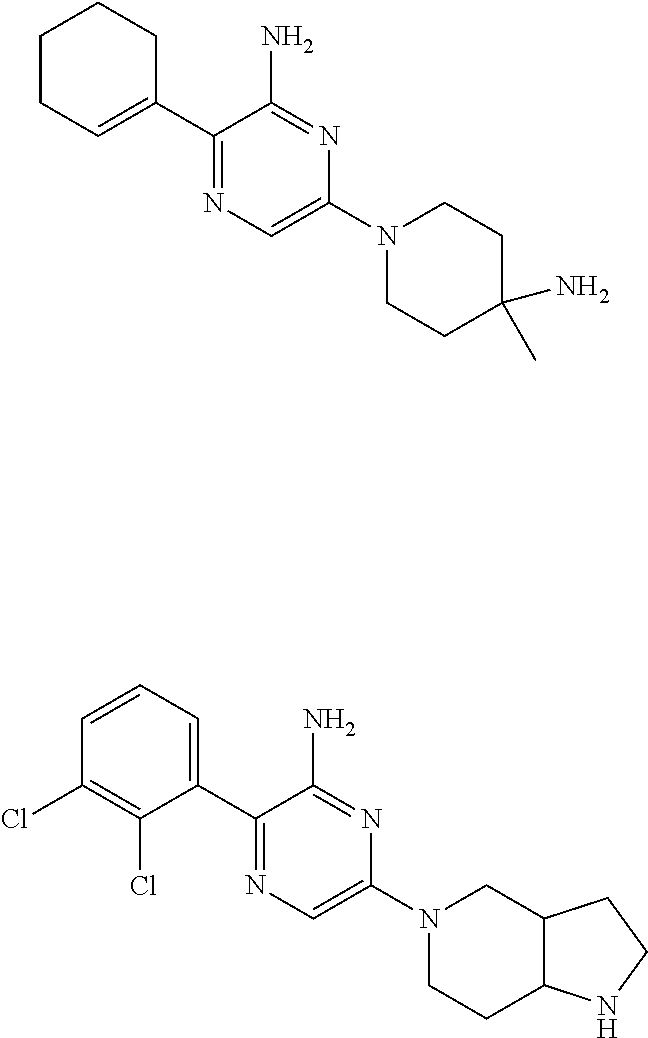


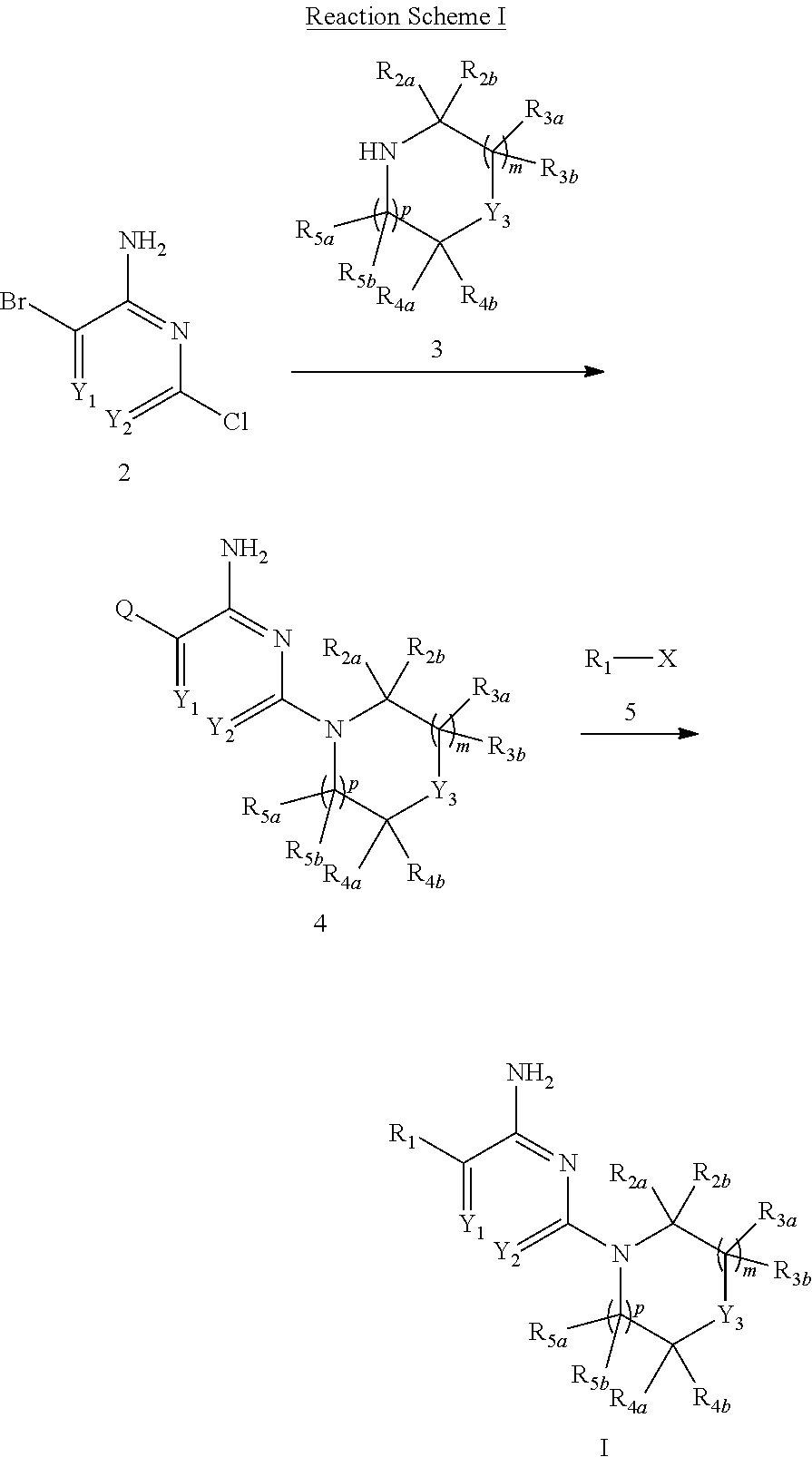

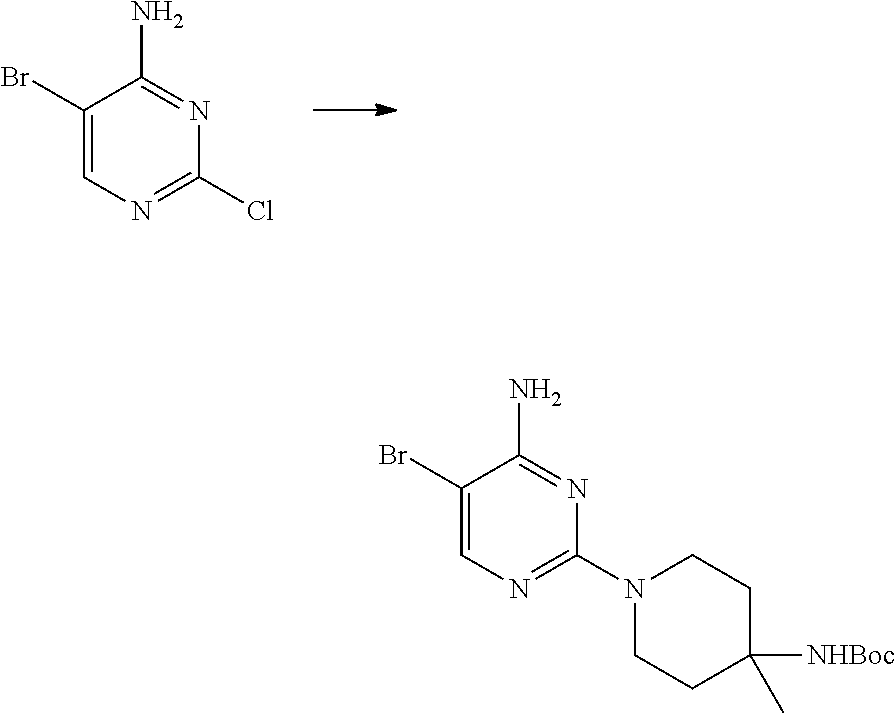
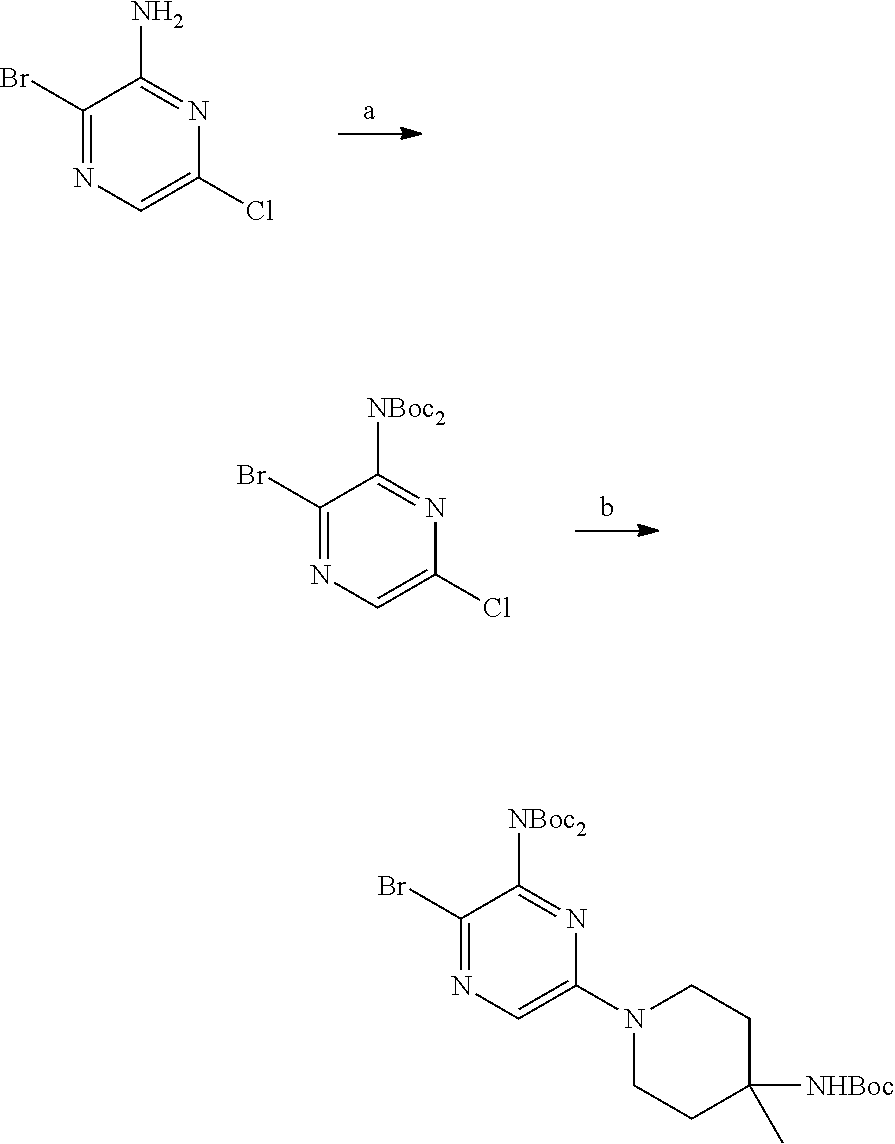


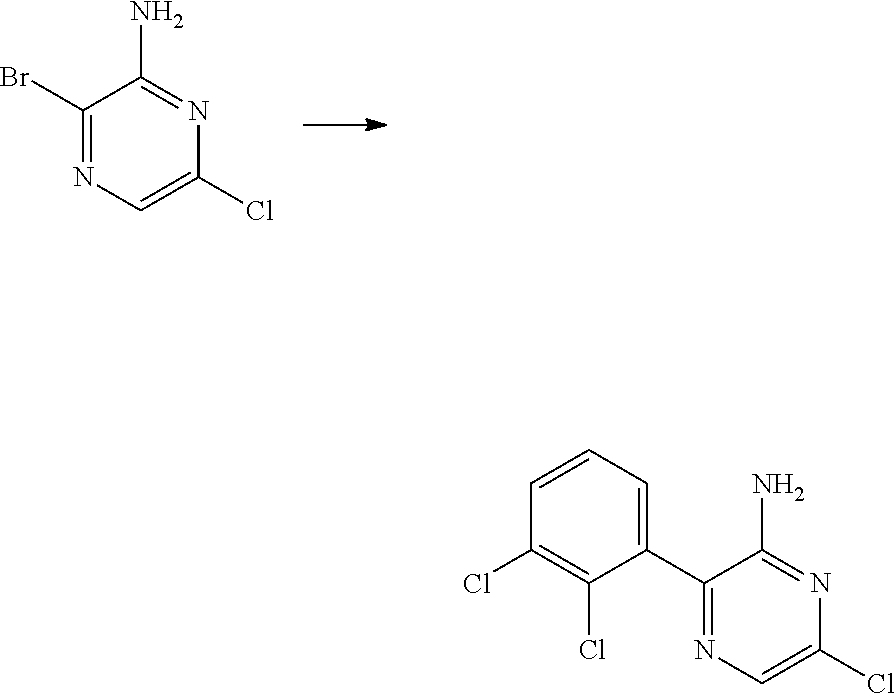
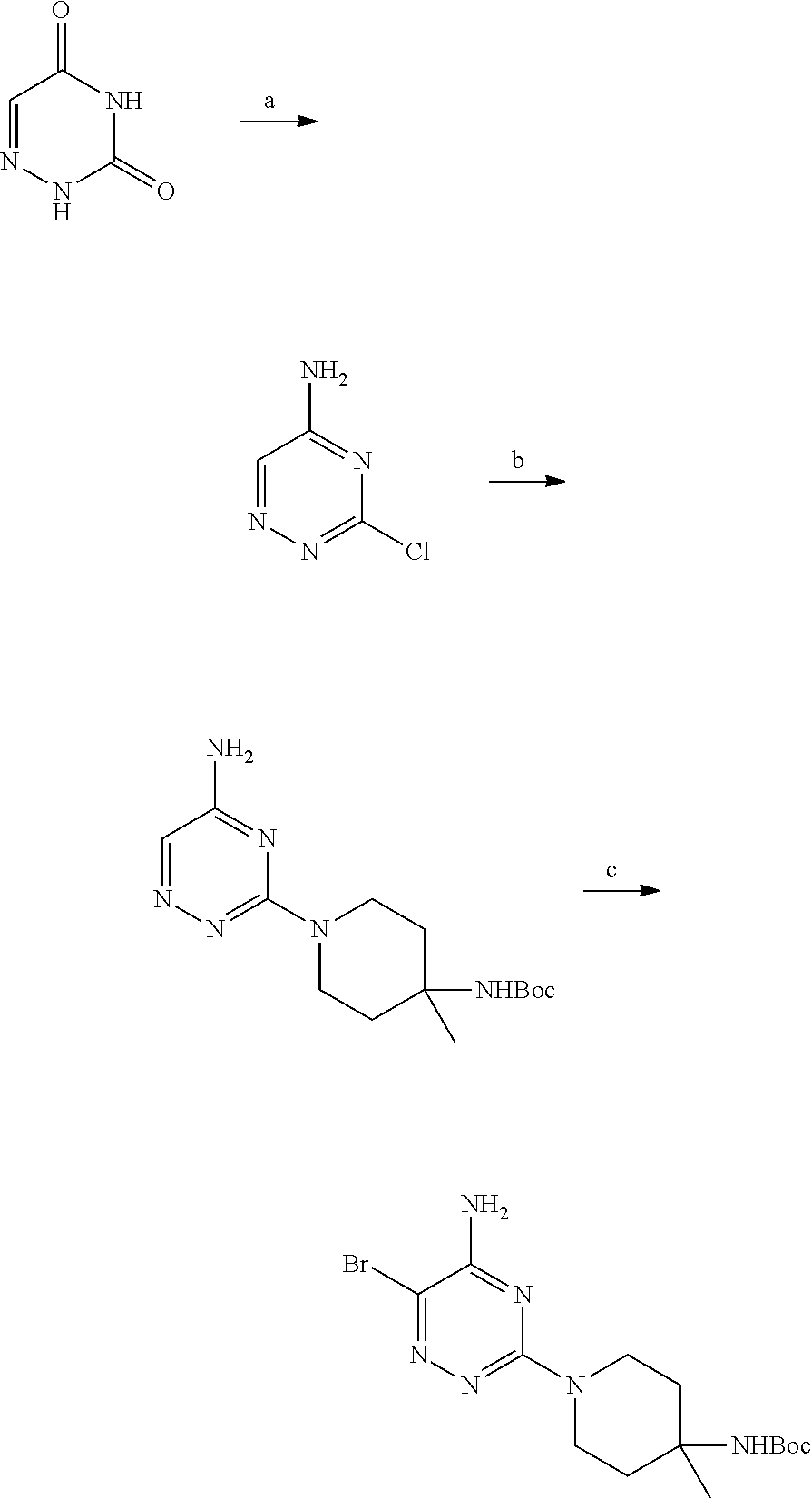
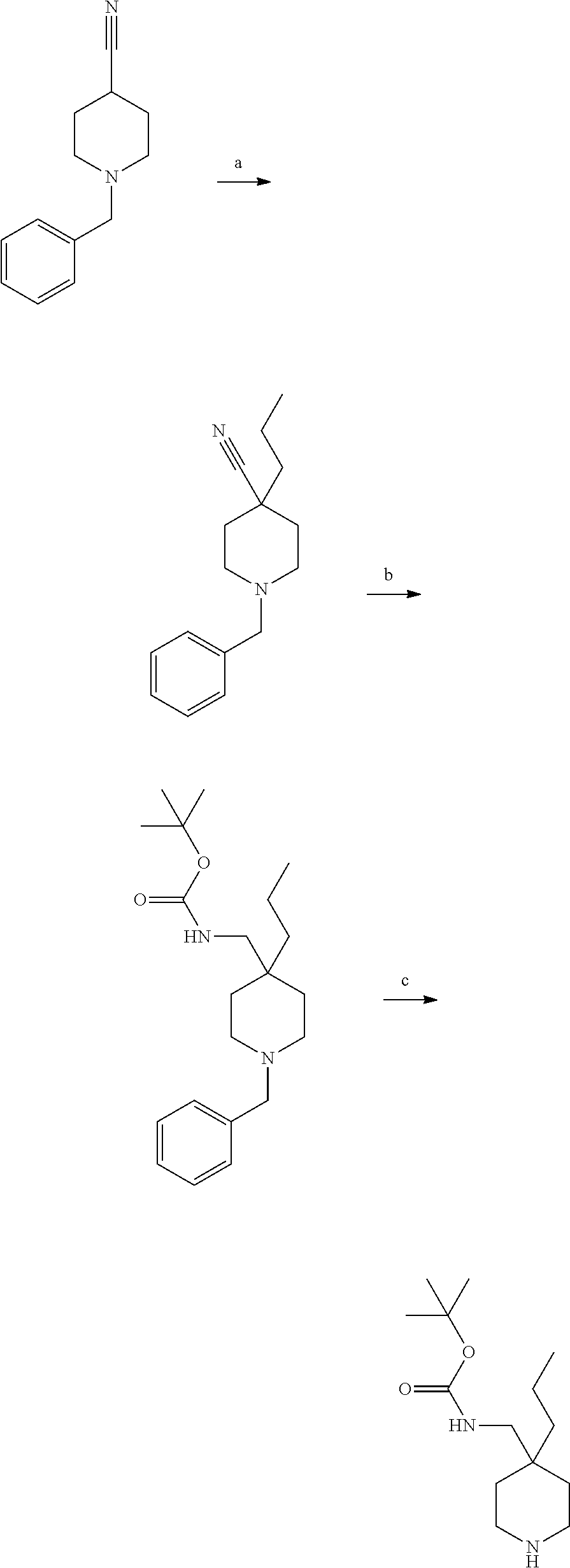
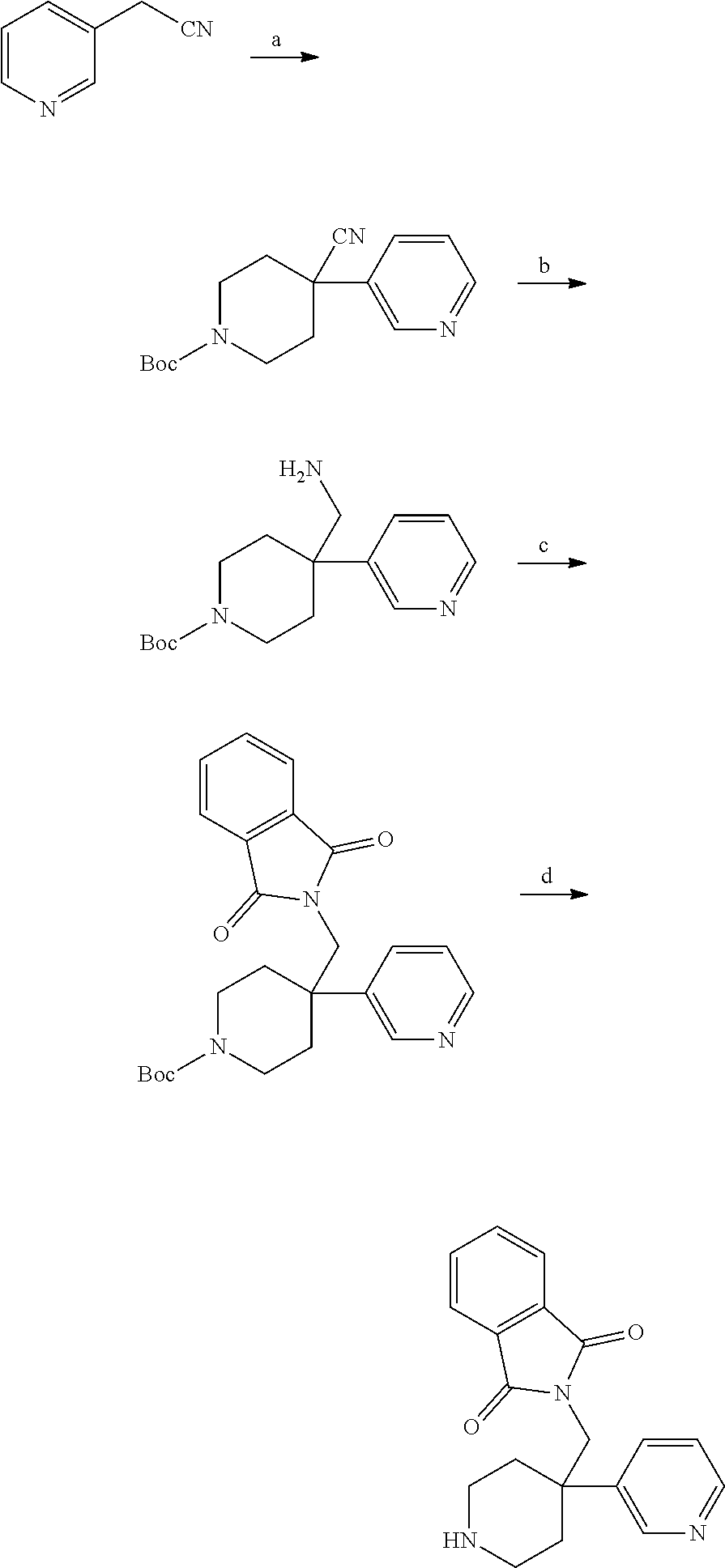

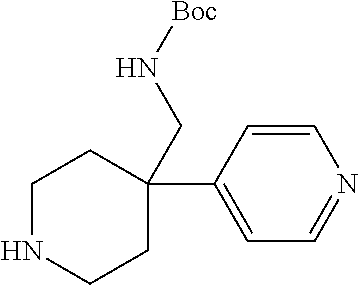



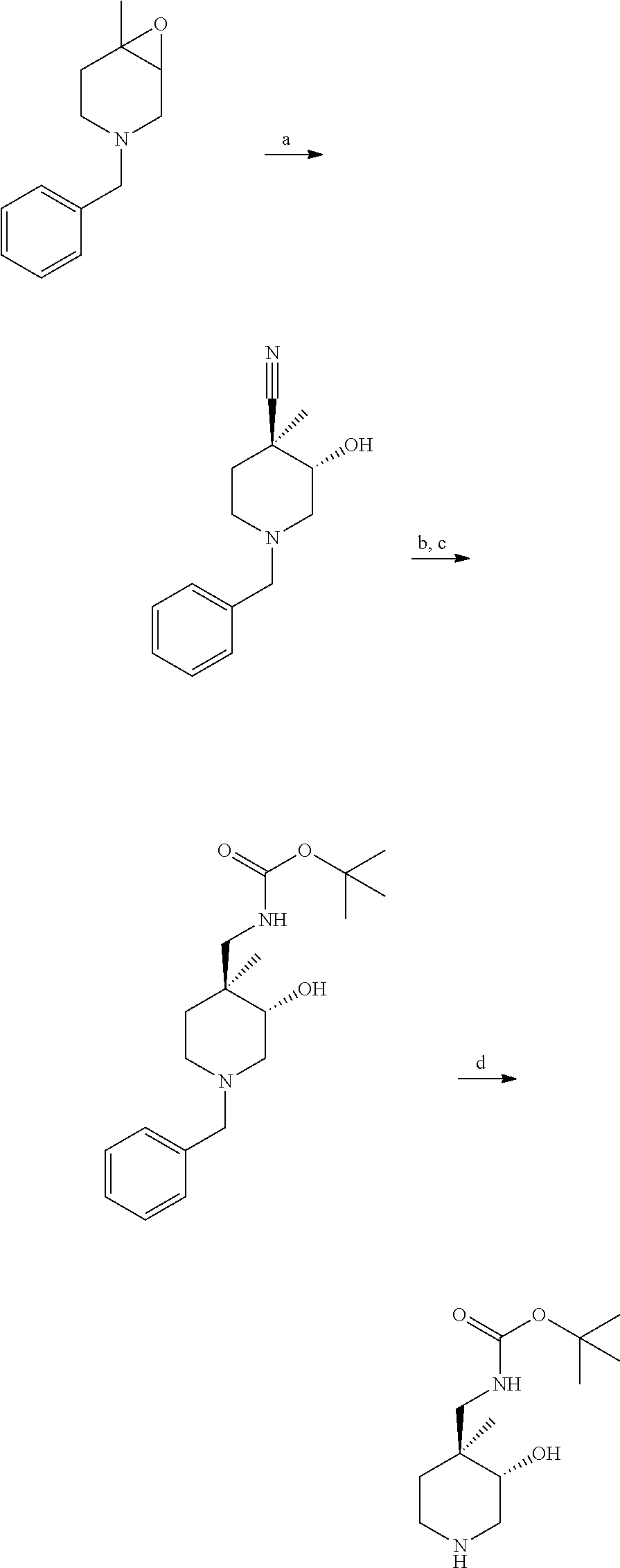



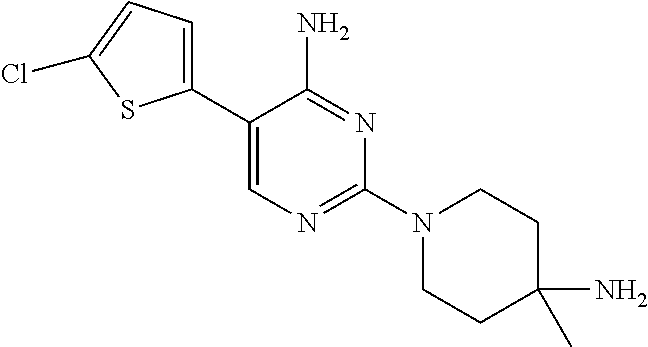


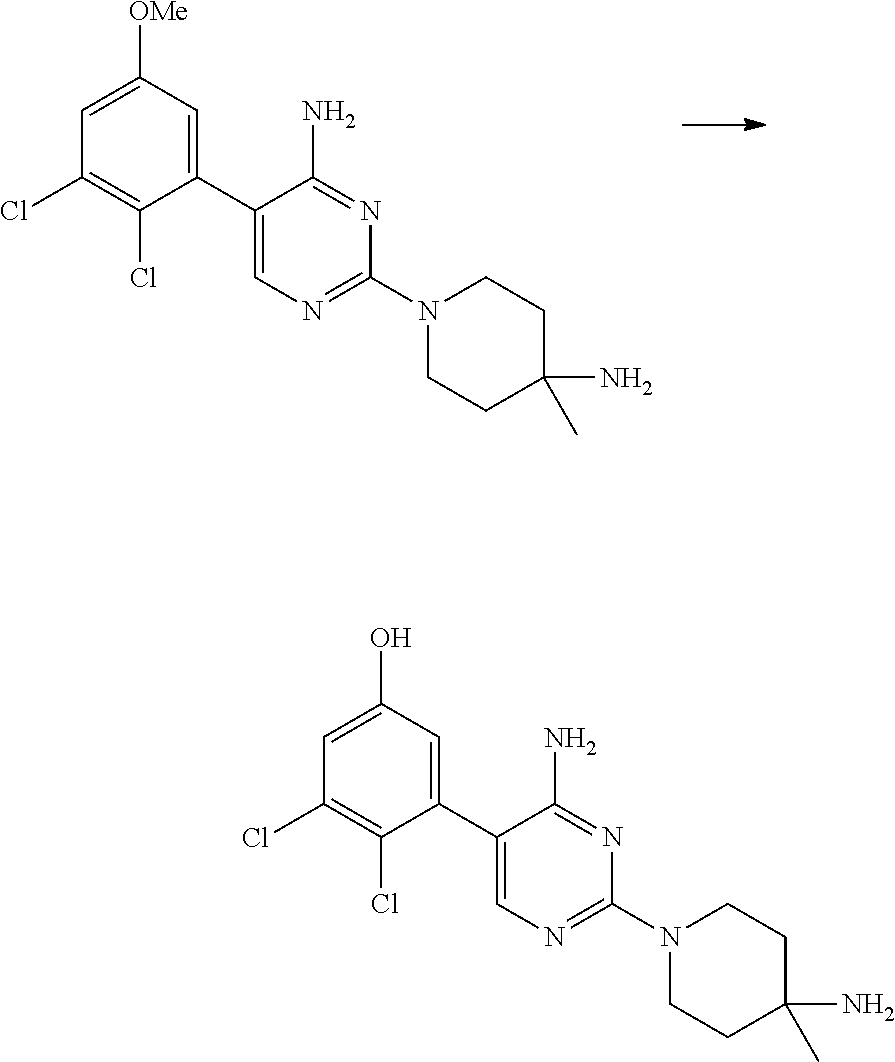

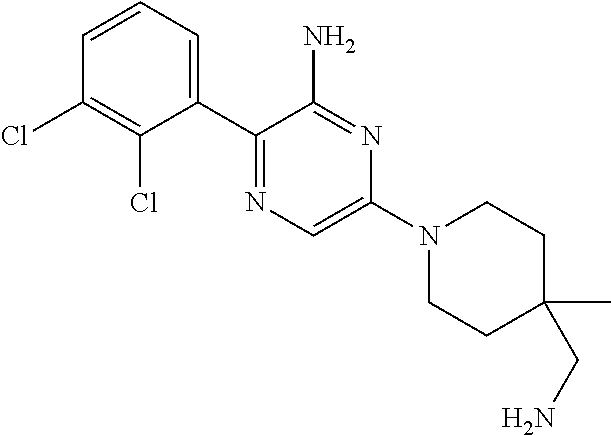

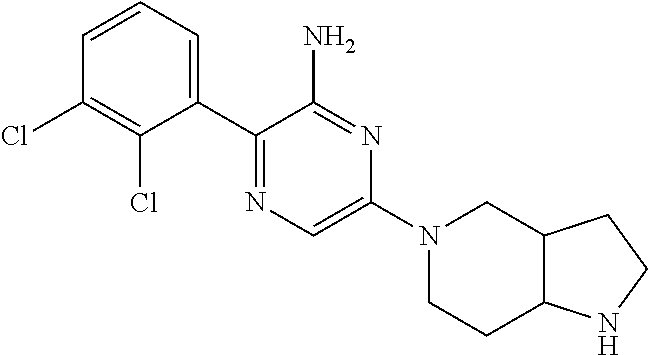
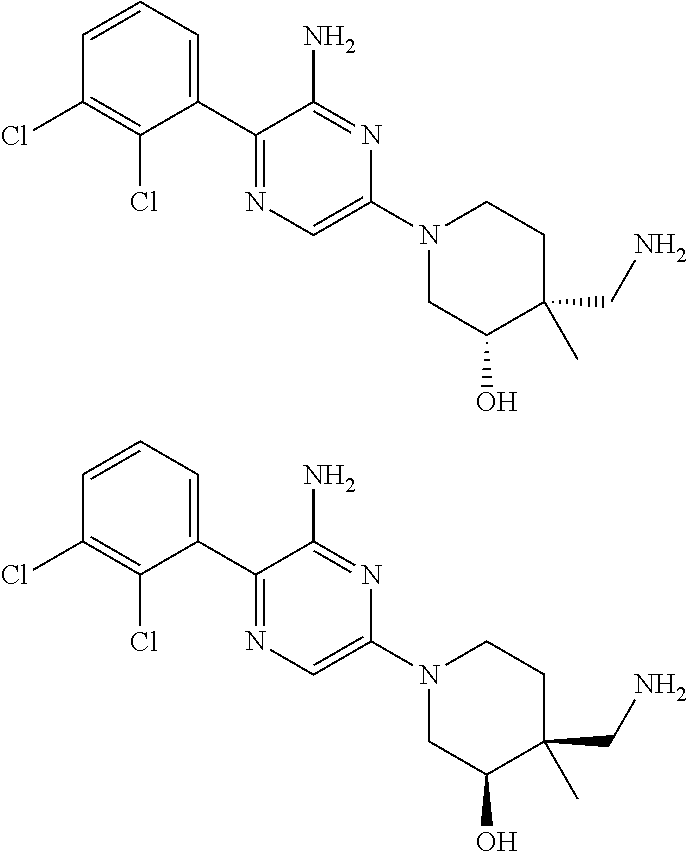
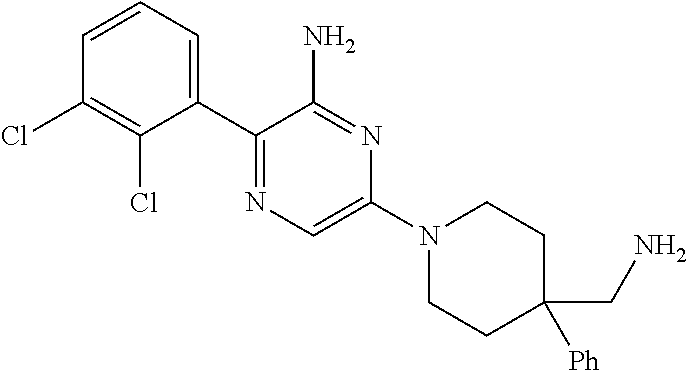

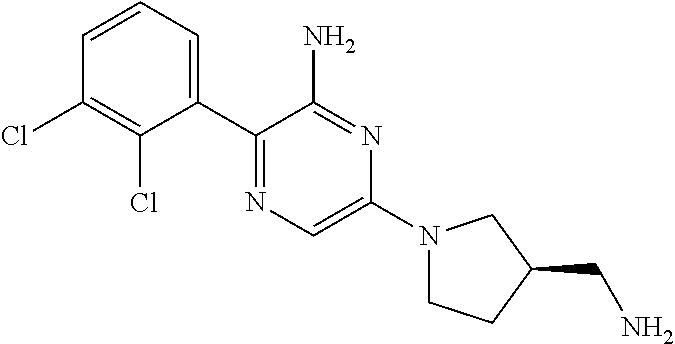
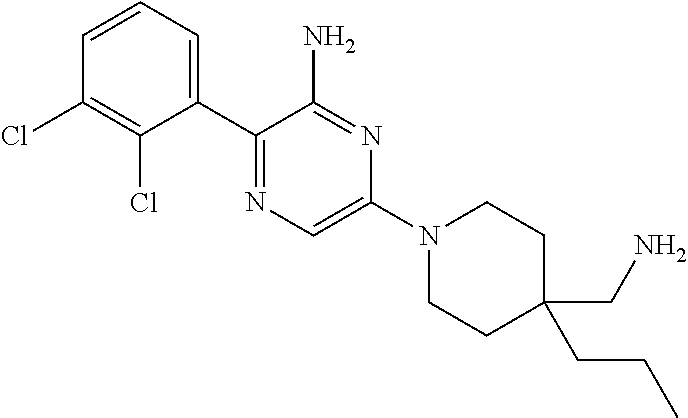





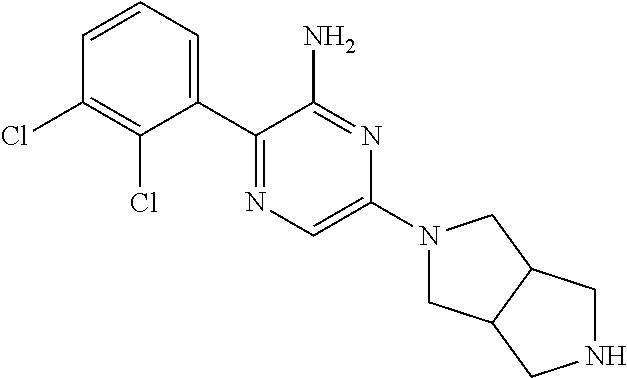





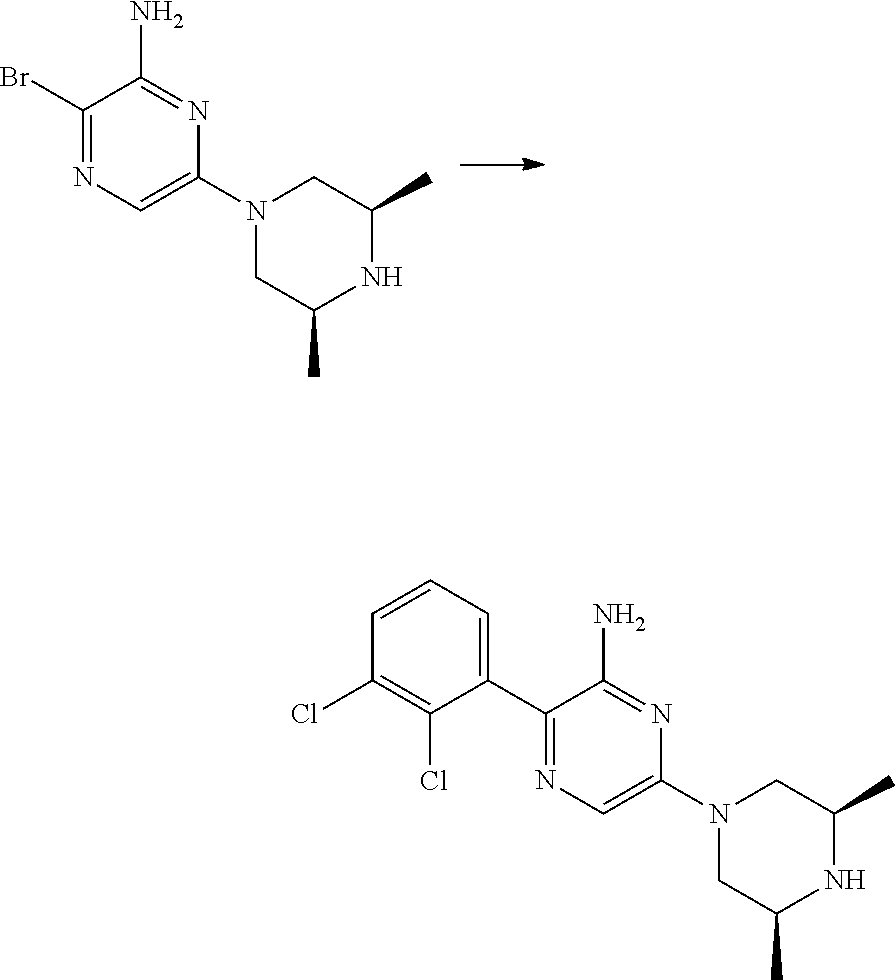
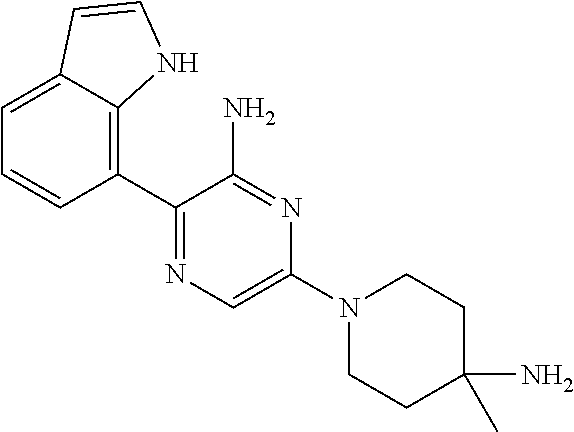


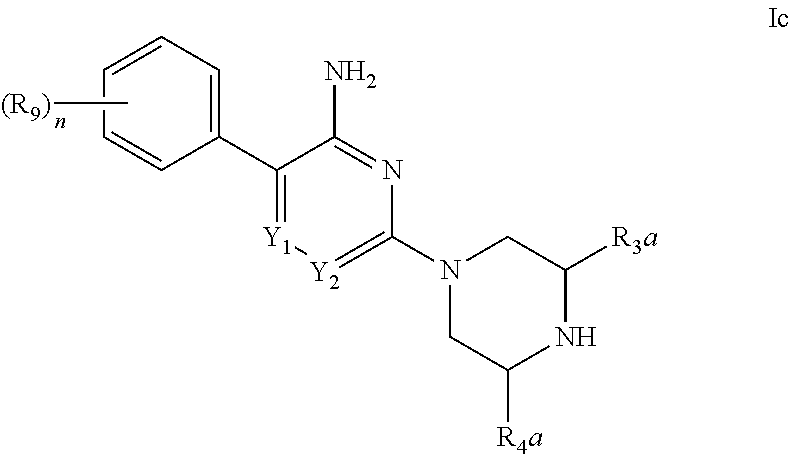
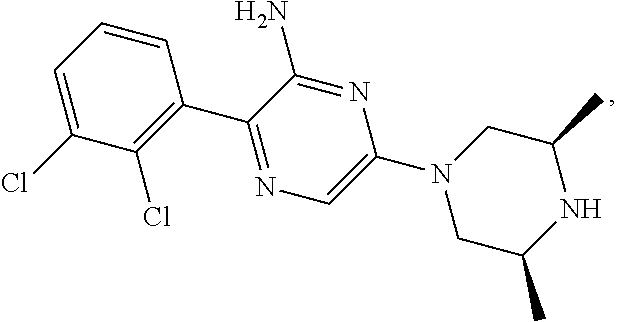

S00001
XML
uspto.report is an independent third-party trademark research tool that is not affiliated, endorsed, or sponsored by the United States Patent and Trademark Office (USPTO) or any other governmental organization. The information provided by uspto.report is based on publicly available data at the time of writing and is intended for informational purposes only.
While we strive to provide accurate and up-to-date information, we do not guarantee the accuracy, completeness, reliability, or suitability of the information displayed on this site. The use of this site is at your own risk. Any reliance you place on such information is therefore strictly at your own risk.
All official trademark data, including owner information, should be verified by visiting the official USPTO website at www.uspto.gov. This site is not intended to replace professional legal advice and should not be used as a substitute for consulting with a legal professional who is knowledgeable about trademark law.